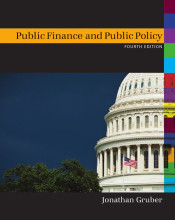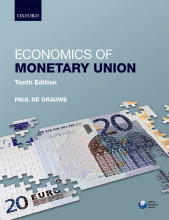Social Insurance
19 important questions on Social Insurance
What are social insurance programs?
When is a program means-tested?
Insurance is valuable because it helps individuals insurance consumption across states of the world. What is consumption smoothing and what are states of the world?
States of the world: the set of outcomes that are possible in an uncertain future
- Higher grades + faster learning
- Never study anything twice
- 100% sure, 100% understanding
What is the expected utility model?
When is a premium actuarially fair?
Why would the government provide insurance?
If low-risk people have a high enough risk premium, they will subsidize high risk people in a pooling equilibrium. What is the difference between a pooling and a seperating equilibrium?
Separating: a market equilibirum in which different types of people buy different kinds of insurance products designed to reveil their true types
What is experience rating? How did it cause death spirals in the US?
In 1995, Harvard stopped subsidizing its most generous plans, which were experience rated. Before, there was a pooling equilibrium. Health employees chose the cheap, generous plan.
After 1995, there was a separating equilibrum: health employees dropped the now expensive generous plan. The less health used much more medical care, the experience-rated premiums of the more generous plans increased substantially. By 1998, the most generous plan had gotten so expensive that it was not longer offered
Adverse selection leads to market failure since health people may not be able to buy insurance. The government can improve market efficiency by making insurance mandatory, but why is this unpopular?
Give some reasons for government intervention in insurance markets, next to adverse selection
2. Administrative costs: Medicare has much lower administrative costs than private insurance
3. Redistribution: governments may want to redistribute from health to sick (simply luck if you're healthy?)
4. Paternalism: governments may feel that people would choose to buy too little insurance for themselves
The importance of social insurance smoothing depends on two factors. Which ones?
2. Cost of the event: easier to self-insure against low-cost events
The cost of insurance is moral hazard. What is this?
What determines moral hazard?
2 How easy it is to change behavior in order to establish the adverse event
In examining the effects of social insurance, four types of moral hazard play a particularly important role. Name them.
2. Increased odds of entering the adverse state
3. Increased expenditures when in the adverse state
4. Supplier responses to insurance against the adverse state
Moral hazard is costly for two reasons. Name them
2. When social insurance encourages adverse events, which raise the cost of the social insurance program, it increases taxes and lowers social efficiency even further
What is the optimal social insurance?
2. The benefit of social insurance is the amount of consumption smoothing provided by social insurance programs
3. The cost of social insurance is the moral hazard caused by insuring against adverse events
What is the irony of asymmetric information?
Which characteristics distinguish social insurance from public assistance?
2. contributions are compulsory
3. benefits only occur at certain events
4. eligibility regardless of income
Explain the moral hazard problem of insurance and how it can be solved
Solution: offer only partial insurance. If a bad accident happens, you bear some of the costs of the accident. Thus, you have an incentive to decrease p(x) by putting in effort (x)
The question on the page originate from the summary of the following study material:
- A unique study and practice tool
- Never study anything twice again
- Get the grades you hope for
- 100% sure, 100% understanding
































